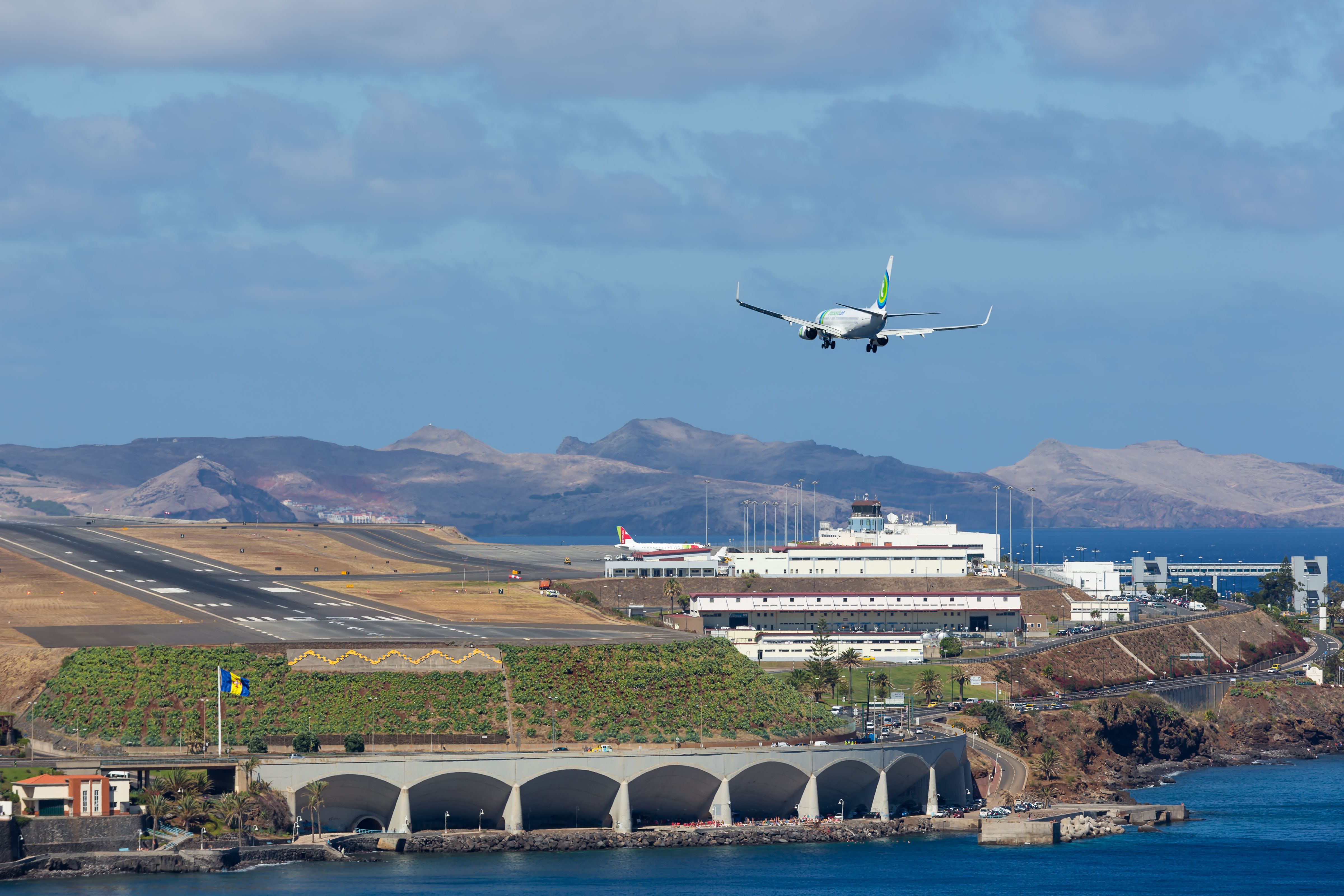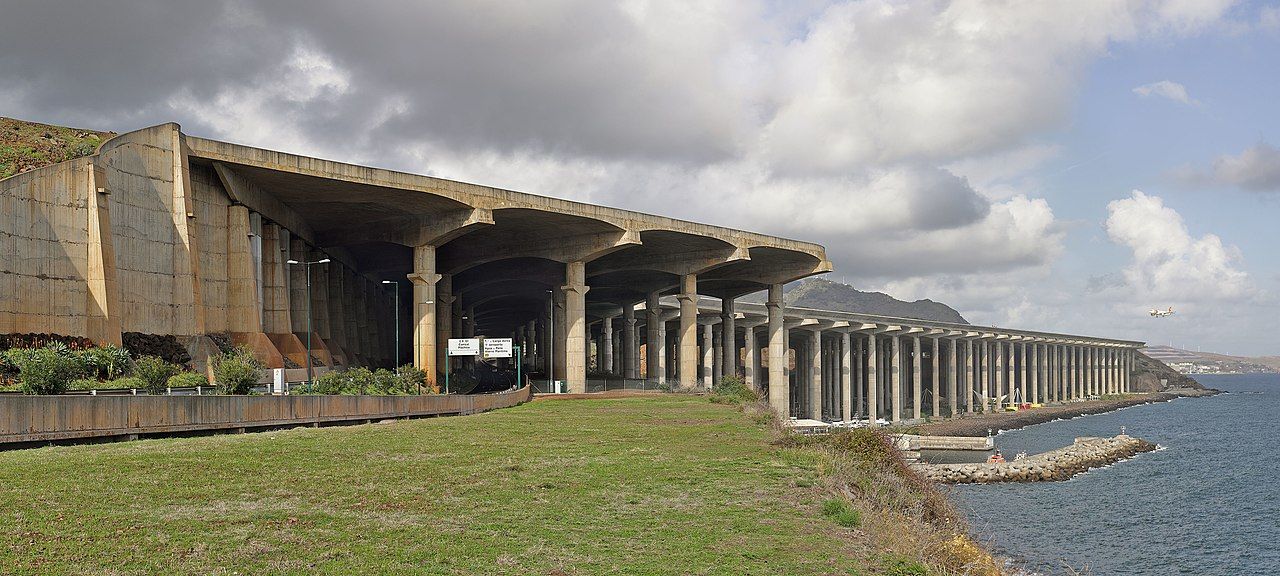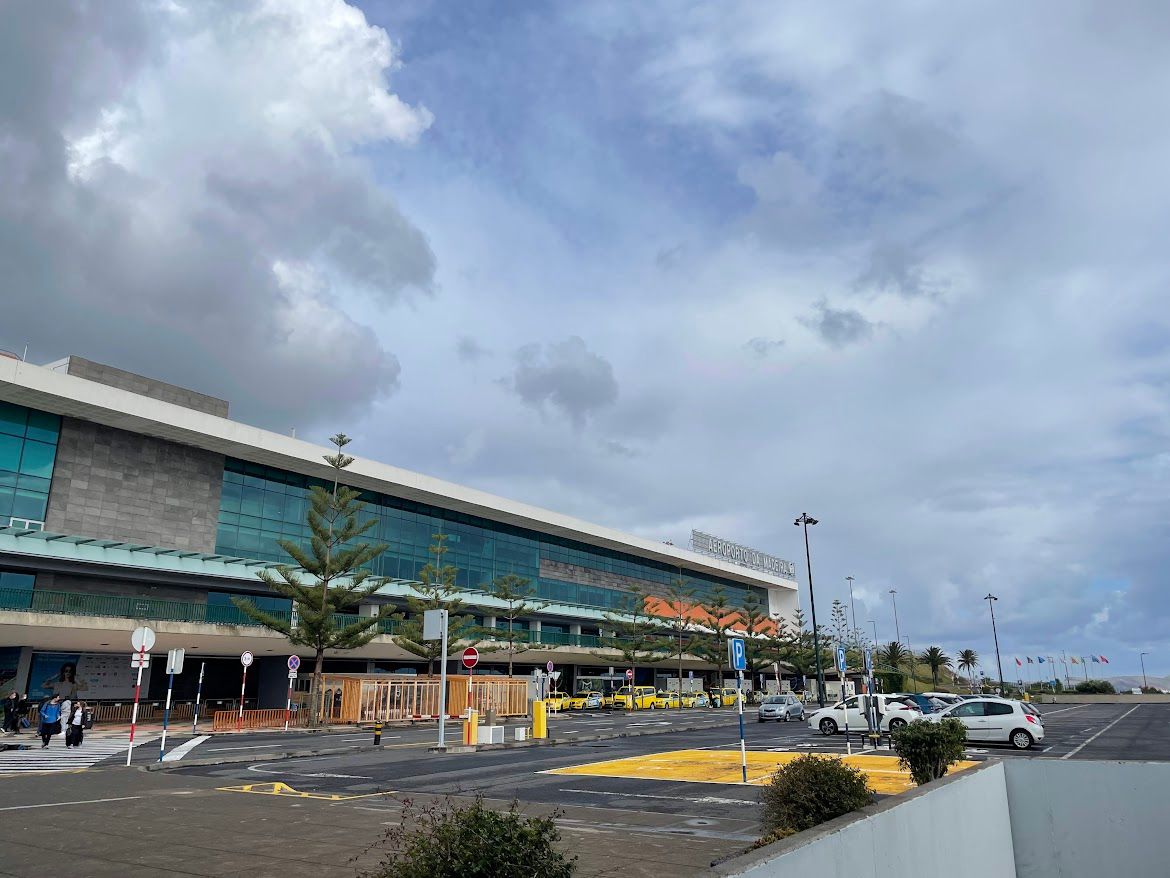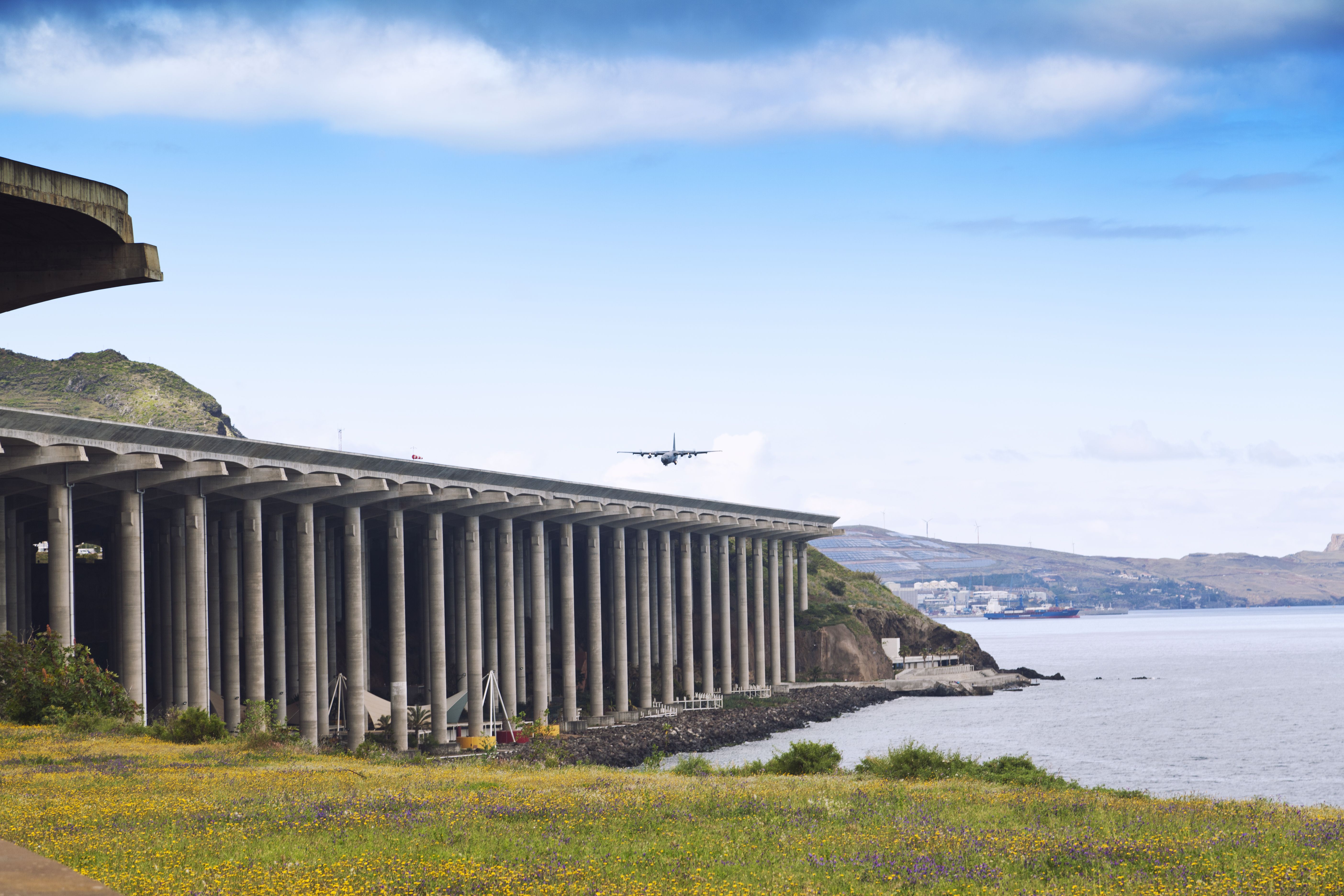Cristiano Ronaldo International Airport (FNC), otherwise known by names such as Funchal Airport, Madeira Airport, and Santa Catarina Airport, is the gateway to the sunny hotspot of Madeira, Portugal. The facility serves millions of passengers each year, but it is well-documented as being the home of some of the most dramatic approaches in the world. But what causes this phenomenon? Let's find out!
Harsh winds
Madeira is an archipelago found in the North Atlantic Ocean. It is nearly 400 km (250 miles) north of the Canaries and 520 km (320 miles) west of Morocco, making it subject to several climate systems. The History Channel's Most Extreme Airports dubbed it the world's ninth most dangerous airport, and the third most dangerous in Europe. In fact, crews have to take on extra training to land there.
As seen above, a TAP Air Portugal pilot was applauded last year for showing fantastic skills to overcome crosswinds landing at the airport. In dramatic footage, the Airbus A321neo can be seen crabbing during its approach into Funchal Airport.
Want answers to more key questions in aviation? Check out the rest of our guides here!
The airport's mountainous setting in the Atlantic sees it witness plenty of strong winds and mountain waves. The weather on the day can be unpredictable due to the battling conditions, and pilots are often forced to divert to the Canary Islands if the situation is too risky. Unfortunately, accidents have still occurred over the years.
A fatal crash prompted changes
Funchal Airport's tricky reputation has been with it since its beginning. The airport opened in 1964, and, just 13 years later, 1977 saw play host to what was, at the time, Portugal's deadliest-ever air crash. The accident, which occurred on November 19th of that year, involved a Boeing 727 operating TAP Air Portugal flight 425.
According to the Aviation Safety Network, the trijet had 156 passengers and eight crew members onboard, and was flying to the island from Brussels via Lisbon. Amid wet weather conditions, the 727 touched down 2,000 feet (610 meters) beyond the runway threshold. This, combined with aquaplaning, left insufficient space to stop.
This caused the aircraft to overrun what was, at the time, a relatively short runway. It then careered off the end of the strip, plunging downwards almost vertically onto a beach, where it broke apart and caught fire. Tragically, of the 164 occupants, 131 died. TAP made changes going forward by flying smaller 727s to Madeira.
In terms of changes made by the airport, its runway was extended by 200 meters (656 feet) to a total of 1,800 meters (5,906 feet) in the 1980s. Then, at the turn of the new millennium, a second expansion saw its length be extended to 2,781 meters (9,124 feet). The extension was built on a platform and is partly over the Atlantic.
Madeira is a Category C airport, meaning that it is considered to pose certain problems during procedures including the likes of approaches, landing, or takeoff. Subsequently, pilots are required to undergo specific simulator training, and sit in the jump seat for takeoff and landings before performing services to Funchal.
Get the latest aviation news straight to your inbox: Sign up for our newsletters today!
Ground support
The extended section of Madeira Airport's runway sits 70 meters (230 feet) above the autonomous region's coastline, and it is spectacularly supported by a grand total of 180 pillars. As airline crews approach the unique structure, unforgiving variable Atlantic winds make it a tough job for them to operate at the airport. Simple Flying took a closer look at the story of the runway extensions last year.
Despite the tough conditions, the airport has been praised for its architectural feats in the modern age. Notably, it won the Outstanding Structure Award from the International Association for Bridge and Structural Engineering in 2004. As such, the sturdy offering will undoubtedly reassure travelers following a shaky landing.
The airport today
Funchal's passenger numbers last year exceeded four million, and, while the island is popular with tourists, it has a significant amount of year-round traffic that nicely complements its seasonal services. As alluded to earlier, the facility has been named after Cristiano Ronaldo since 2017, making it one of two European airports to bear a footballer's name (the other being George Best Belfast City).
What are your thoughts about the challenges of flying to and from Madeira? Have you ever flown to this facility? Let us know your thoughts and experiences in the comments!
Source: Aviation Safety Network


.jpg)


